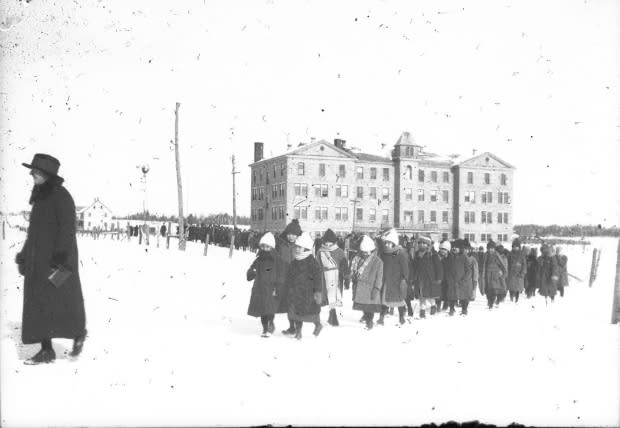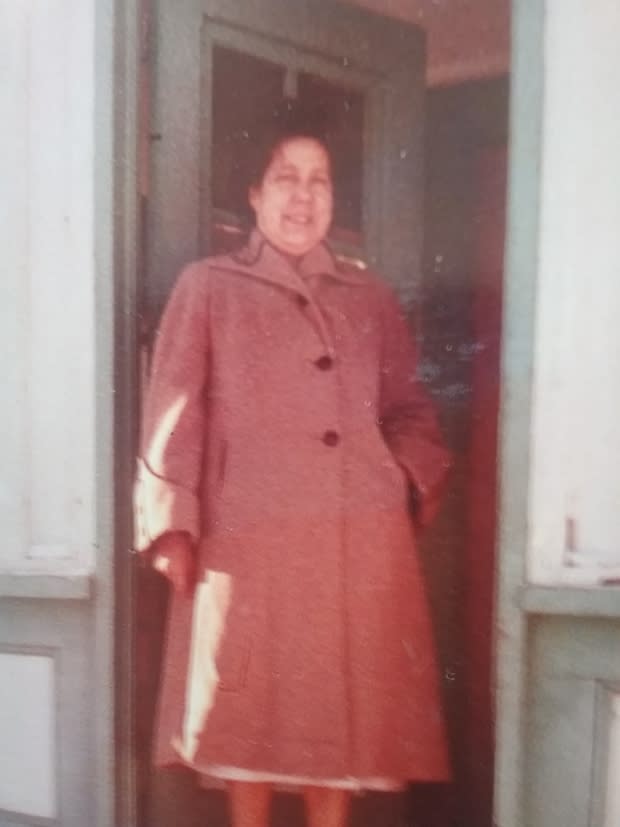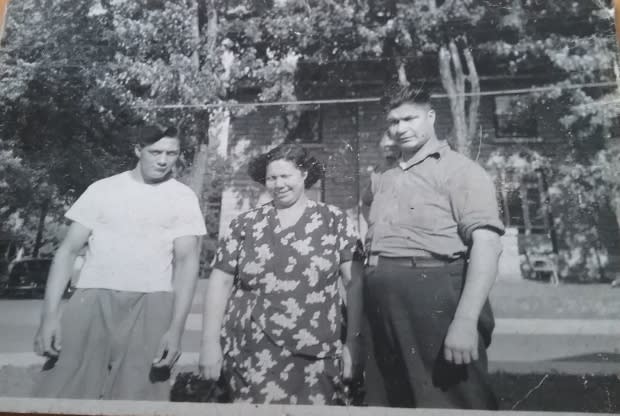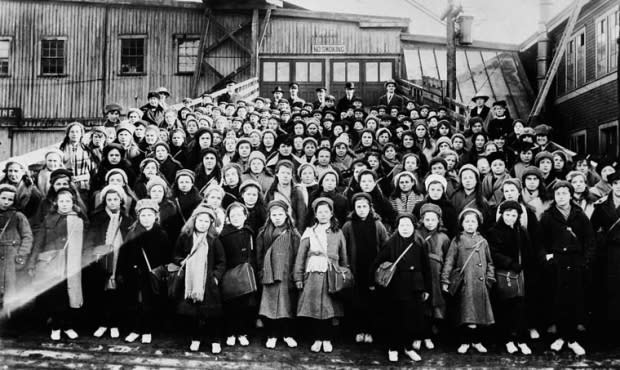Mysteries surround Mohawk children housed with Home Children on way to residential school
Theresa Rice was a residential school survivor from Kahnawake, Que., who never had the opportunity to return home as a child.
Her family, now living in Sault Ste. Marie, Ont., are searching for answers as to why she was separated from her community, how she ended up living among child immigrants from the U.K. being put up for adoption and why she was told her parents were dead when they were not.
In 1921, when Rice was 13, she was taken from Kahnawake to a Catholic residential school about 800 km away in Spanish, Ont.
"The police came to her family and took her away," said Melanie Gratton, Rice's daughter-in-law.
Melanie and her husband Ronald live in Sault Ste. Marie. Ronald has early onset dementia; his mother told him many stories about her experience at Spanish before she died in the 1970s. He passed those stories on to his wife and children.
"When it was summer and time to go home, the school told her her family had died, so she never went back. That wasn't true," said Melanie Gratton.

In reality, Rice's father Lawrence died in 1943, while her mother Charlotte died in 1949 — two decades after Theresa completed her schooling at Spanish.
When Theresa was 16, she was sent to Sault Ste. Marie as a domestic servant. She eventually met her husband Joseph Gratton there.
The Grattons are unsure what Theresa's family in Kahnawake were told, nor what happened to any of her siblings who attended the school at the same time. They said she reunited with two brothers and a grandmother when Ronald was a young child.
The Spanish residential schools
The boys' and girls' schools at Spanish, located on the north shore of Lake Huron about 100 km west of Sudbury, together formed the largest residential school in Ontario. The majority of students were from the communities on Manitoulin Island, while a small number of students came from communities in Quebec such as Akwesasne, Kahnawake, and Kanesatake.
In Kahnawake, the St. Francis Xavier mission was founded by the Jesuits. While the community had a church-run day school, the band council and Indian agent still recommended some students be sent away to Spanish.

For example, in a 1919 band council resolution, 22 children were recommended to be "placed at Ottawa or Spanish Ontario Institutes." In one instance, it was recommended the child be sent because he had a club foot; most of the rest were sent because their families were large and poor.
Ry Moran, the director of the National Centre for Truth and Reconciliation, said that was a common reason found in admission and discharge records for students.
"Quite often, those admissions forms, they can be very prejudiced and critical of the parents and have some fairly prejudiced and racial undertones to them," said Moran.
"It is a reality that parents did place their kids in schools. The inverse of that is that we heard from many students and survivors that sense of anger and abandonment or confusion over why their parents did put them into those schools, and trying to reconcile that with themselves."
St. George's Home
In 1921, there were more than 50 boys and girls from Kahnawake at the Spanish schools, including Rice and her brothers Angus and Peter.
While Angus was recorded in the 1921 census at Spanish, Theresa and her younger brother Peter were among a group of 19 Indigenous children recorded at St. George's Home in Ottawa. It was a receiving home run by the Congregation of the Sisters of Charity of St. Vincent de Paul for Catholic "Home Children" — poor and orphaned children sent from the U.K. for adoption or employment.
Eric Pouliot-Thisdale, an independent researcher, found the names by cross-referencing public archives. Seven of the children, including Theresa and Peter, were from Kahnawake based on a previous census. The Indigenous children were listed as "inmates" while the non-Indigenous children were listed as "wards."
"They were sent there for — only God knows, one day, two days, three months — and just happened that the census was managed while they were there," said Pouliot-Thisdale.
St. George's Home closed in 1934. The Jesuits of Canada, who managed the Spanish boys school, say the home had no connection to them.
"It was a private Catholic company founded to house British orphans sent to Canada," wrote Father Gilles Mongeau in an email.
"I do not know why Kahnawake children would have been there."

The Grattons are the only descendants of children listed as inmates at St. George's Home that Pouliot-Thisdale was able to track down. For him, the oral history passed down in that family raises questions about child welfare practices during the residential school era.
He wonders if the children from Kahnawake were being offered for adoption or labour along with the Home Children.
"Many were not in the census or mentioned anywhere afterwards, so they either passed away or were adopted — only God knows from there," he said.
'It wouldn't surprise me'
Janice Forsyth is the director of First Nations Studies at Western University. Her research focuses partially on the Spanish residential schools. While she said it's the first time she's heard of Indigenous children being housed at a receiving home for Home Children and possibly being adopted out, she said it's not surprising.

"If you think about all of the different ways that the government was trying to break down Indigenous families, and the churches of course were involved, it wouldn't surprise me if this was actually a practice," she said.
"I'm not sure if it's widespread because I think we would have heard about it by now, but then again, it's amazing that people didn't hear about residential schools 10,15, 20 years ago. That wasn't something that was widely discussed, either."
Ry Moran said residential schools and the child welfare system were closely linked.
"The two really operated hand in glove," he said.
"They were mutually reinforcing, and both were used as tools of the state to scoop up Indigenous kids from their families."
Moran said the government and churches were heavily involved in all aspects of Indigenous Peoples' lives at the time.
"It depended on the unique circumstances, but these systems of child welfare, apprehension, placing children in residential schools, placing children in foster homes, they're all part of the same overall system that's been operating in this country for a very long period of time," he said.

